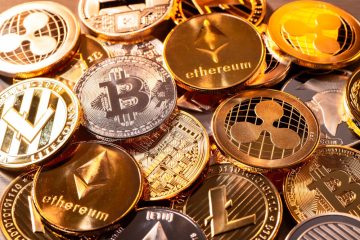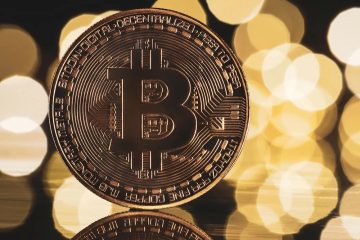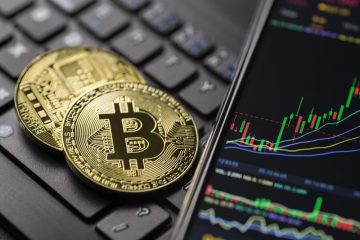Will Bitcoin be the New Gold Standard in the Digital Economy or Perhaps They Are Digital Pearls?

In 1917, a stunning Cartier double strand of pearls captivated the young businesswoman Maisie Plant, who was married to a wealthy industrialist. A New York City headquarters was being considered by the Parisian jeweler. The Plants’ mansion on Fifth Avenue and 52nd Street in Manhattan was offered by Pierre Cartier in exchange for the jewelry, which was valued at $1 million. Morton, who is Maisie’s husband, quickly consented to the transaction.
For those who think bitcoin is the new digital gold, what happened next should serve as a warning. As an alternative, it could wind up like digital pearls.
For what reason would the wealthy industrialist Morton Plant give up his stately mansion in exchange for a handful of pearls? His huge interests include railroads, steamships, and hotels.
Pearls have been highly sought after for ages, and in some parts of the globe, they were even considered more valuable than diamonds or gold. At least $24 million would be the equivalent of the $1 million that the Cartier pearls sold for in 1917.
Little did Plant and Cartier know, a Japanese businessman named Kokichi Mikimoto had already industrialized the process of making cultivated pearls a few months before.
In no time at all, Mikimoto had them mass-produced. A precipitous decline in the value of genuine pearls started in the 1920s and persisted for decades.
After Maisie passed away in 1957, her Cartier necklace fetched $151,000 at auction.
The value of the most exquisite natural pearls has increased again in the past several years. At a Geneva Sotheby’s auction in 2015, a pearl necklace by Cartier similar to the one worn by Maisie Plant fetched approximately $7 million.
Still, after adjusting for inflation, that amounts to approximately one-third of the Plant necklace’s 1917 price.
The pearls-for-real-estate swap was a huge win for Cartier. Two blocks up Fifth Avenue from the iconic Cartier building, there was a similarly sized but less famous property that sold for $525 million in 2016.
How come I’m tying this to bitcoin anyway? The assumption that the token is digital gold is fueled in large part by its rarity, which adds to its attraction.
In contrast to precious metals like gold, the quantity of bitcoin is limited. The maximum amount of coins that can be produced is effectively set at 21 million. There are currently roughly 19 million coins in circulation, and their issuance will gradually decrease until they are all gone, which is expected to happen around 2140.
Because of its extreme rarity, bitcoin adherents hold the firm belief that the cryptocurrency’s value will continue to climb forever. With a gain of nearly 8,400% in the last decade, Bitcoin’s value has increased by 22% this year alone.
Whether or not bitcoin or one of the recently created exchange-traded funds holding it turns out to be digital gold is a crucial consideration for anyone tempted to purchase it.
The purchase power of one ounce of gold is roughly equivalent to what it was in ancient Rome two thousand years ago, after accounting for variations in the cost of living. As the purchase power of government-issued currencies declines over time, the idea that bitcoin will be just as durable as gold as a store of value becomes more appealing.
What occurred to natural pearls also happens to technologies, as shown in history. Economist Joseph Schumpeter referred to this phenomenon as “the perennial gale of creative destruction.”
With its groundbreaking software, BlackBerry skyrocketed from 25 million to 85 million active users between 2009 and 2014, rendering flip phones obsolete. Next, the iPhone completely outshone BlackBerry.
When it came to personal computers, IBM and Apple buried Commodore and Atari. Yahoo annihilated Go.com and Infoseek, two pioneering search engines. Google, in turn, demolished Yahoo. When it came to social media, Friendster gave way to MySpace, which Facebook then destroyed.
You probably would have bet on Cisco Systems if you had predicted in the early 2000s that the internet would transform the world. Cisco became the most valuable stock in the world due to its hardware, which forms the foundation of the internet. In the end, though, cloud computing propelled companies like Amazon, Microsoft, and others much beyond Cisco.
The fate of nearly every technology that was once considered revolutionary has been turned upside down. The bitcoin network has only become stronger since its launch in 2009. Is it impossible to disrupt?
Like all software, the Bitcoin code needs regular updates. In the past, it has been susceptible to bugs, but they never caused significant damage. However, the security and stability of the Bitcoin network could be jeopardized if a programming error remains undiscovered for an extended period of time and is extensively used, which would have a devastating effect on the value of the money.
In her book “Broken Money,” independent financial expert Lyn Alden believes that “any [software] update is a potentially damaging vector.” Alden advises her clients to invest in bitcoin.
The prospectuses of the new bitcoin exchange-traded funds (ETFs) all sound the alarm that the introduction of competing digital currencies would drive down bitcoin’s price. That may take a long time, if it happens at all. It could also appear out of nowhere.
Bitwise Asset Management’s chief investment officer, Matt Hougan, stated, “We’re never at the end of innovation.” Bitwise Bitcoin ETF was introduced on Jan. 10 by Bitwise.
A different digital asset might replace bitcoin as the neutral medium of exchange, according to Hougan. “When you invest in bitcoin, you’re not investing in a whole cryptocurrency; you’re investing in bitcoin itself—an asset, an application, and an ecosystem component.”
You’re taking a risk without diversifying your bets on the immutability and scarcity of bitcoin. Keep your bets small and hedge them if you can, like Maisie Plant taught us.







